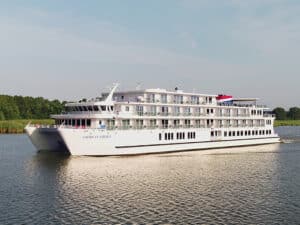
Royal Thai Navy takes delivery of RAmparts 3200
Written by Nick Blenkey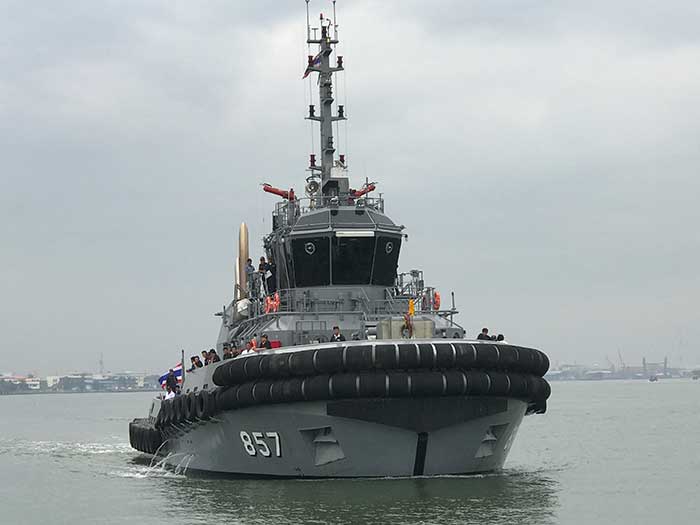
H.T.M.S. Panyi
MAY 30, 2017 — Thailand’s Italthai Marine shipyard recently delivered H.T.M.S. Panyi, a Robert Allan Ltd. designed RAmparts 3200 class tug to the Royal Thai Navy.
The tug is named after Ko Panyi which is a fishing village in Phang Nga, Thailand, notable for being built on stilts by fishermen and is a well-known tourist destination.
Initial feedback from all levels of the Navy suggests that the tug has been very well received.
The delivery of H.T.M.S. Panyi inaugurates the Royal Thai Navy’s replacement program for existing tugs. The tug is responsible for handling larger vessels of the Royal Thai navy such and other duties include supporting operations such as fire fighting, oil recovery in navy ports, other ports and along the coast line.
The tug has been designed and built to LR notation ✠ 100A1, Tug, ✠ LMC, Fire-Fighting Ship 1 with Water Spray System
Particulars of this RAmparts 3200 design are as follows:
Length overall: 32.00 m
Beam, molded, extreme: 12.40 m
Depth, molded (hull): 5.40 m
Maximum draft: 4.35 m
Primary tank capacities are as follows:
Fuel oil: 155 cu.m
Potable water: 50 cu.m
Foam: 7 cu.m
On trials, the H.T.M.S. Panyi met or exceeded all performance expectations, with the following results:
Bollard Pull, ahead: 56 metric tonnes BP
Free running speed, ahead: 12.7 knots
The vessel has been arranged and outfitted to high standards with twenty (20) crew berths in total. The commanding officer’s cabin and a two-officer cabin are located in the deckhouse; cabins for other officers and crews located on the lower accommodation deck.
Main propulsion for the tug consists of a pair of MTU 16V4000M54 diesel engines, each rated 1,685 kW at 1,800 rpm, and each driving a Schottel SRP 1212 fixed pitch Z-drive unit, in ASD configuration.
The electrical plant comprises two identical diesel gensets, each with a power output of 200 ekW.
The deck machinery consists of one ship-assist hawser winch forward, and one tow-hook on the aft deck for coastal towing service. Ship-assist service will be carried out through a specially designed staple which accommodates a fairlead. A capstan and a deck crane are also provided on the aft deck.
The wheelhouse is designed for maximum all-round visibility with a forward control station providing maximum visibility to both fore and aft deck working areas.
Ship-handling fenders at the bow consist of two rows of cylindrical fender, 800 x 400. A 500 x 450 “W” block fender is arranged below the cylindrical fenders. 300 x 300 hollow “D” fenders provide protection along the forecastle deck and the main deck sheer lines, and similar “D” fender is used at the stern.

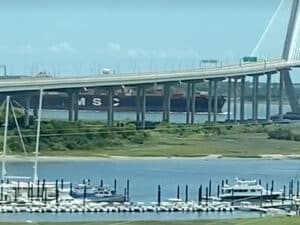

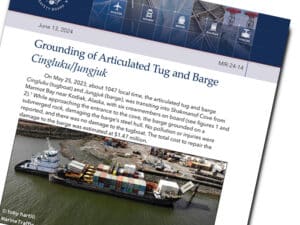
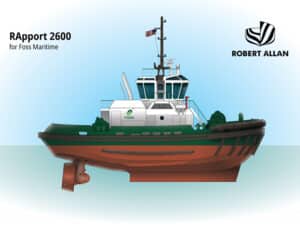
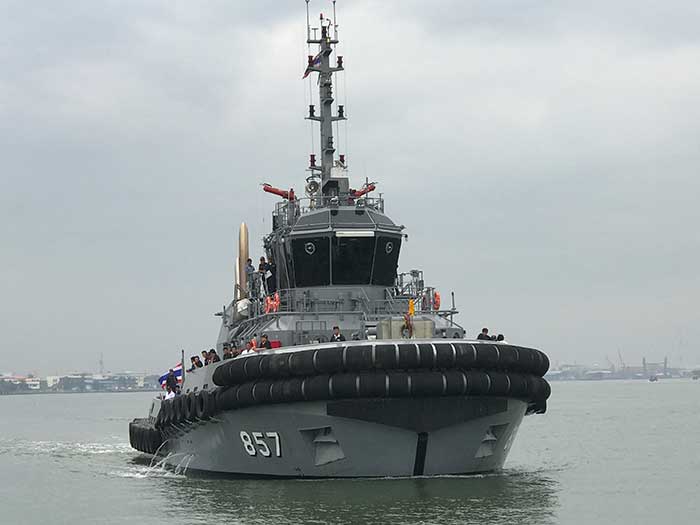
Leave a Reply
You must be logged in to post a comment.